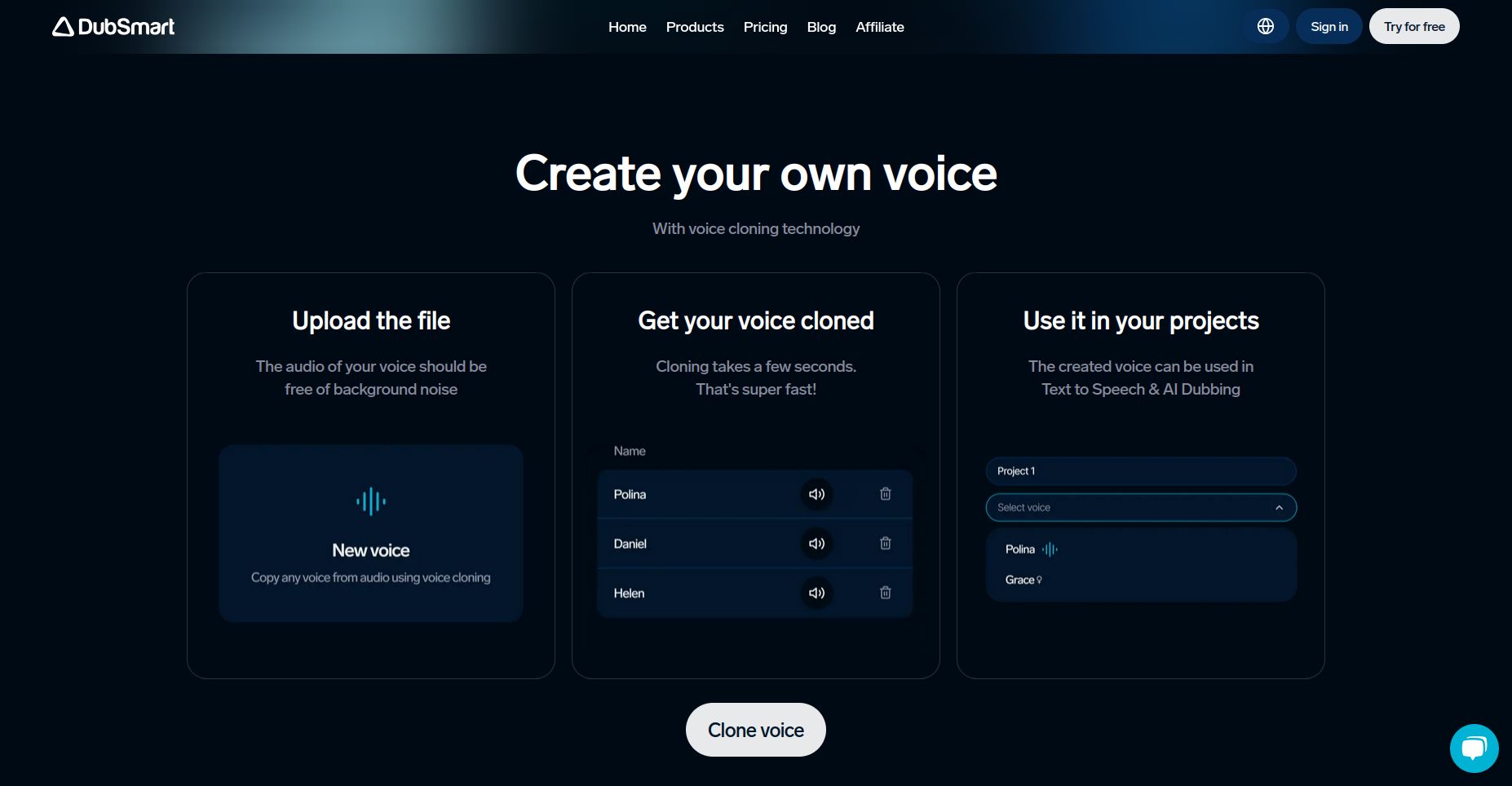AI Dubbing with Regional Accents: How It Works
AI dubbing with regional accents lets creators adapt content into different languages while preserving or modifying accents to better connect with audiences. It combines technologies like voice cloning and language processing to produce natural-sounding voices, ensuring both linguistic accuracy and emotional tone. Here’s a quick summary:
- Why It Matters: Regional accents make content relatable and culturally aligned for local audiences.
- How It Works: AI analyzes speech patterns (pitch, rhythm, inflections) and applies them to new languages using generative models.
- Key Benefits: Faster localization, lower costs, precise accent control, and scalability.
- Challenges: Maintaining accuracy, avoiding stereotypes, and addressing ethical concerns like voice rights.
Platforms like Deepdub (130+ languages) and DubSmart (33 languages) lead the market by offering tools to fine-tune accents and ensure high-quality output. Creators can now deliver content that feels authentic and resonates across regions.
Core Functions of AI Accent Dubbing
Key Components and Systems
AI dubbing combines technologies like voice cloning, language processing, and machine learning to mimic accents accurately. These tools work together to produce natural-sounding voices while preserving the unique characteristics of speech. The result is an AI system capable of replicating accents with impressive precision.
How AI Learns Accents
AI systems rely on advanced pattern recognition to study speech from large voice datasets. They analyze elements like pitch, rhythm, stress, and regional inflections to recreate accents, capturing both the linguistic details and emotional tone. After learning these accent patterns, the AI applies them to localized content, ensuring a seamless integration.
Methods for Accent Integration
This process starts by analyzing the original voice patterns, then maps the target language's phonetics. Generative AI is used to apply the accent, and adjustments are made to pitch and rhythm for clarity and cultural alignment. To ensure the final output is accurate and emotionally resonant, human oversight often refines the results.
AI dubbing platforms are continually improving, aiming to provide content that is both technically accurate and culturally meaningful. By incorporating regional accents effectively, these systems help localized content resonate with diverse audiences.
Using AI Dubbing Tools: Step-by-Step Guide
Content Setup Requirements
Start by preparing your content. Clean up scripts, convert media into compatible formats, and add metadata like timestamps and speaker details to ensure accurate alignment. Make sure the audio is clear and split the content into smaller, more manageable sections. This makes adjustments easier later on.
Accent Selection and Adjustment
Pick accents that resonate with your audience’s regional and cultural backgrounds. Many AI dubbing tools now include advanced options for accent customization. For example, DubSmart supports 33 languages and offers various regional accent choices, giving you the flexibility to fine-tune accents.
You can adjust parameters like tone, rhythm, and pronunciation to match the specific speech patterns of your target region. Once you’ve set the desired accent, it’s crucial to verify the output through a detailed quality check to ensure it meets professional standards.
Quality Check Process
A thorough quality check is key to delivering polished, professional dubbing. Start by previewing the audio to confirm the accent sounds natural and flows smoothly. Use recognized benchmarks like the Mean Opinion Score (MOS) to assess quality objectively.
Here’s a streamlined verification process:
- Check accent accuracy: Ensure the accents sound authentic.
- Sync audio and video: Confirm the dubbing aligns perfectly with visual elements.
- Consult native speakers: Verify cultural accuracy and naturalness with people familiar with the target language.
- Incorporate feedback: Make refinements based on expert reviews.
This method ensures your content respects cultural nuances while maintaining clarity. A great example is MHz Choice’s partnership with Deepdub, which localized international shows for North American audiences. Their careful attention to accent control and quality checks resulted in content that felt authentic and resonated with viewers.
Best AI Dubbing Software for Accents
Current Market Leaders
The AI dubbing industry is home to several platforms that excel in integrating accents into localized content. One standout is Deepdub, which leverages generative AI to handle over 130 languages and dialects. Its Accent Control technology allows for precise adjustments, making it easier to adapt content for various audiences worldwide. The platform has already shown its effectiveness through collaborations with streaming services, ensuring international content resonates with diverse viewers.
Though Deepdub is known for its broad language capabilities, other platforms have also made strides in accent management. Each brings a distinct method to tailoring voices for regional preferences and cultural nuances.
DubSmart: Features and Options

DubSmart offers a mix of voice cloning and advanced accent control across 33 languages, making it a go-to option for creators aiming for regionally accurate content. It provides a range of pricing plans, starting with a free tier for basic voice cloning and scaling up to enterprise-level packages with more advanced features.
What sets DubSmart apart is its ability to fine-tune pronunciation and intonation, ensuring regional variations sound natural. This integrated approach helps tackle common issues in AI dubbing, such as achieving precise accents and aligning with cultural expectations. For content creators, these tools offer a practical way to enhance the quality and relatability of their work.
sbb-itb-f4517a0
Common Issues and Ethics
Accent Accuracy Standards
Representing accents accurately without falling into stereotypes is a major hurdle in AI dubbing. Limited training data and overly simplistic models often result in inaccuracies. To tackle this, many platforms rely on diverse datasets and thorough quality checks, often involving local language experts to ensure content aligns with cultural norms. For example, platforms like DeepDub, which supports over 130 languages and dialects, show how combining advanced tech with cultural insight can create meaningful and accurate content.
Accent Intensity Management
Striking the right balance between clear communication and cultural resonance is essential. Accents that are too strong can make speech hard to understand, while overly subtle accents might lose their cultural impact. Modern AI algorithms now offer fine-tuned control over pronunciation, rhythm, tone, and cultural elements, achieving both clarity and resonance. Advanced text-to-speech models are a great example of this, allowing for precise adjustments while keeping speech natural.
Voice Rights and Permissions
AI voice replication brings ethical challenges around consent and usage rights. It's crucial for creators to obtain clear permission, set clear usage guidelines, and be transparent about AI-generated content. Human dubbing artists remain essential, adding emotional depth, cultural accuracy, and nuance that AI alone can't fully replicate.
Conclusion: Next Steps in AI Accent Dubbing
AI accent dubbing is reshaping how content is localized by incorporating regional accents. Looking ahead, advancements in this field aim to provide content creators with tools to deliver experiences that feel more personal and culturally relevant. This progress opens the door to techniques like micro-localization, which focuses on subtle dialects to make content feel deeply connected to local audiences.
The future of AI accent dubbing revolves around three main areas:
Blending Technology with Culture: Improved AI models and richer datasets are making it possible to recognize accents with greater precision while maintaining emotional depth and cultural awareness. These advancements help represent regional accents more accurately without falling into stereotypes, offering more inclusive dubbing solutions.
Streamlined Workflows: AI tools are now seamlessly fitting into production pipelines, simplifying the localization process without sacrificing quality. This efficiency allows creators to handle complex localization projects more effectively.
Expanding Global Reach: With continuous improvements in AI dubbing technology, creators can distribute their content to wider audiences while preserving its original tone and character. By combining advanced AI features with a focus on cultural nuances, global distribution becomes more accessible.
FAQs
How does AI dubbing work?
AI dubbing uses a mix of text-to-speech, voice analysis, and language processing technologies to produce natural-sounding audio with regional accents. These systems study vocal patterns and apply them to the dubbed content, ensuring accents are consistent. For example, platforms like DubSmart show how AI can maintain accent accuracy across multiple languages. This process creates audio that feels natural and connects with audiences on a cultural level.
What makes AI dubbing with regional accents effective?
AI dubbing stands out by accurately reflecting dialect differences, preserving cultural details, and keeping the emotional tone intact. Advanced training on large datasets allows AI models to:
- Reflect subtle dialect differences.
- Keep emotional depth in the speech.
- Retain cultural details in the audio.
- Adjust accent intensity to balance clarity with cultural relevance.
What are common challenges in AI accent dubbing?
Some of the main challenges include:
- Consistency: Ensuring accents remain accurate across various parts of the content.
- Cultural Sensitivity: Avoiding stereotypical or inappropriate accent portrayals.
How can content creators ensure quality in AI-dubbed content?
To ensure high-quality AI dubbing, creators should:
- Provide Clear Source Audio: High-quality input is essential for the best output.
- Choose Accents Thoughtfully: Select regional accents that align with the target audience.
- Conduct Regular Reviews: Check the output carefully to ensure it sounds natural and meets expectations.
